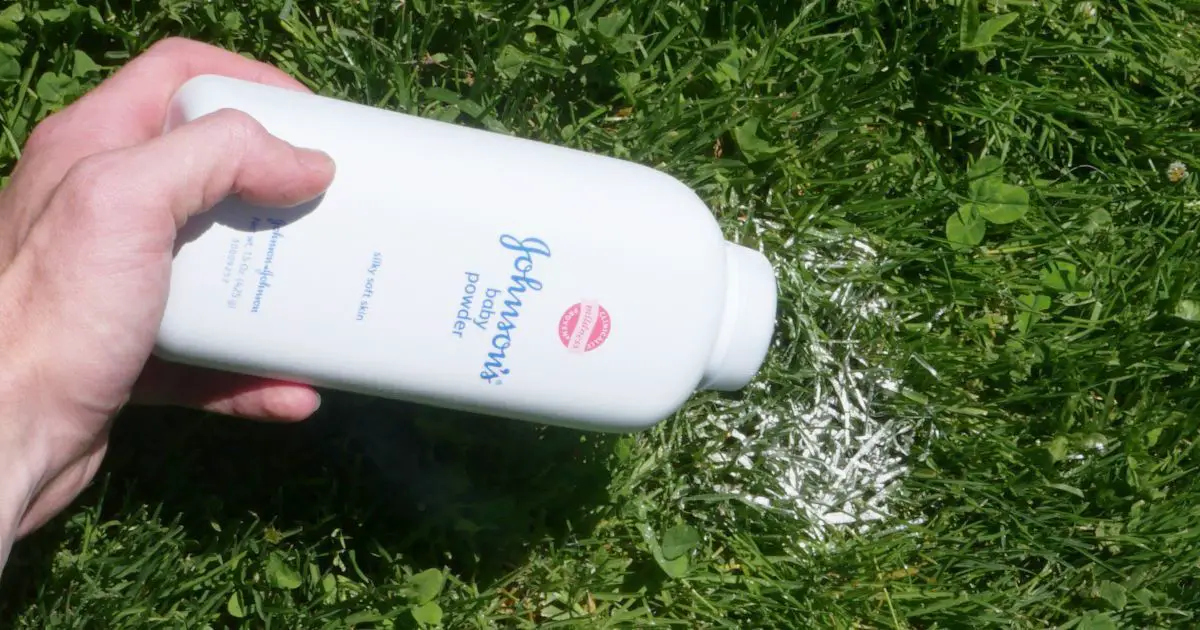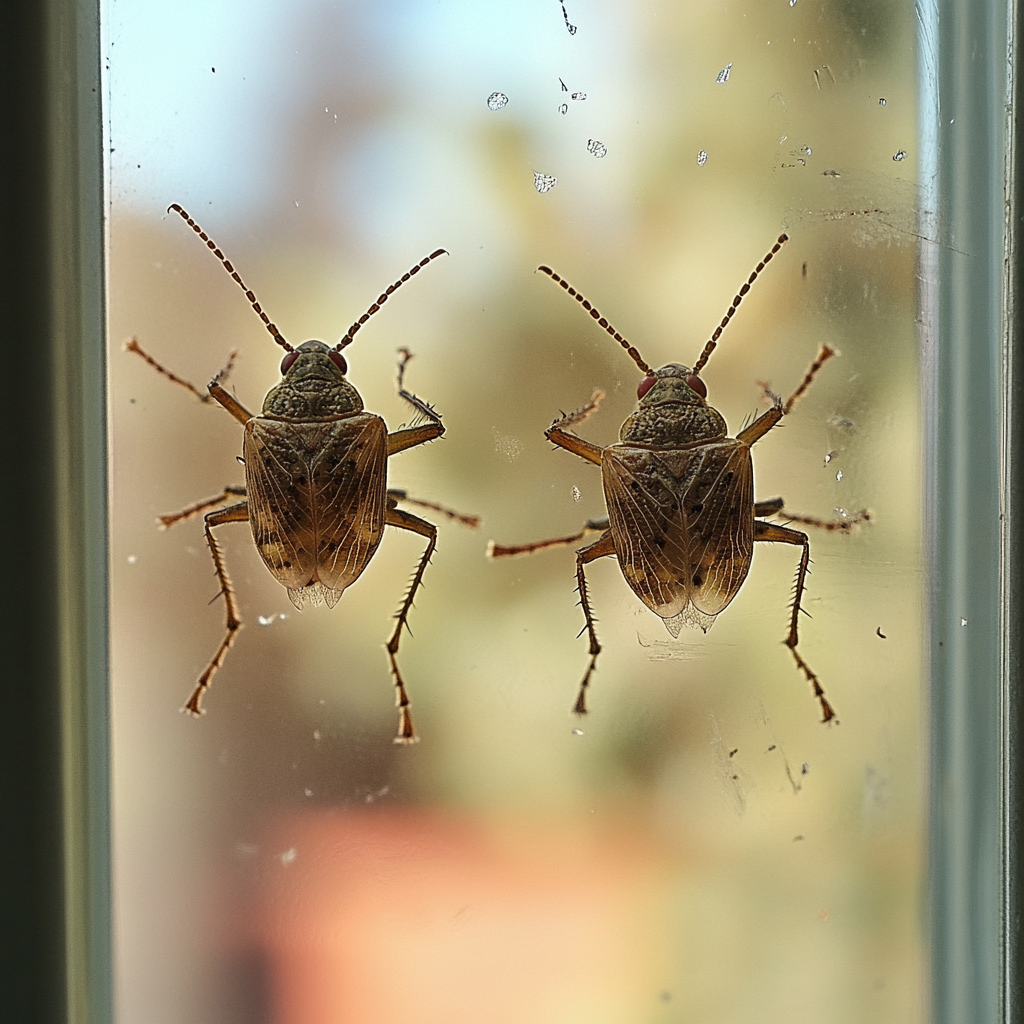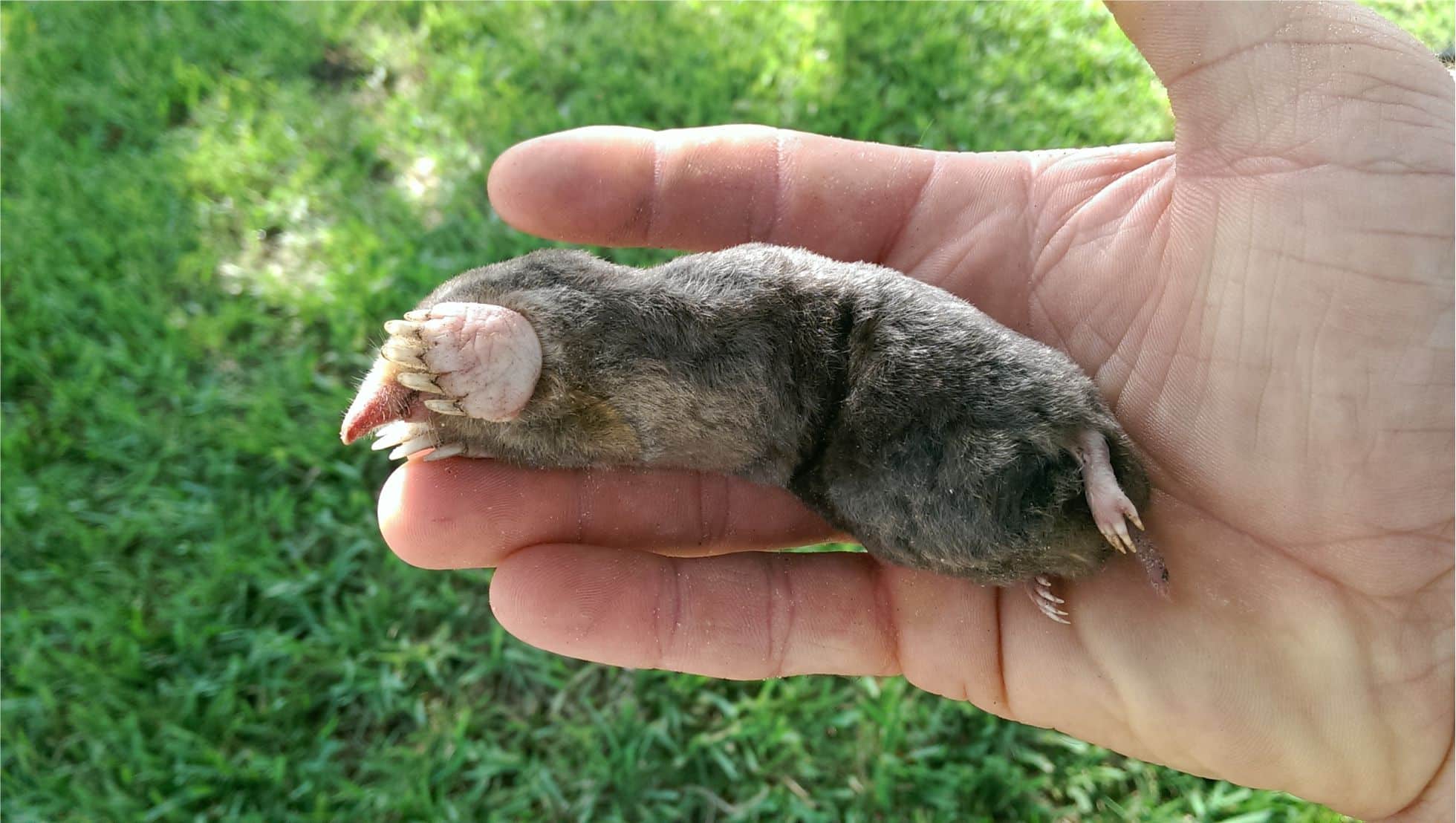I love gardening and have grown many houseplants, but Anthuriums are my favorite. These plants are not just beautiful; they’re also easy to care for.
They have heart-shaped flowers and vibrant colors. This guide is perfect for anyone who wants to grow their own Anthurium plant.
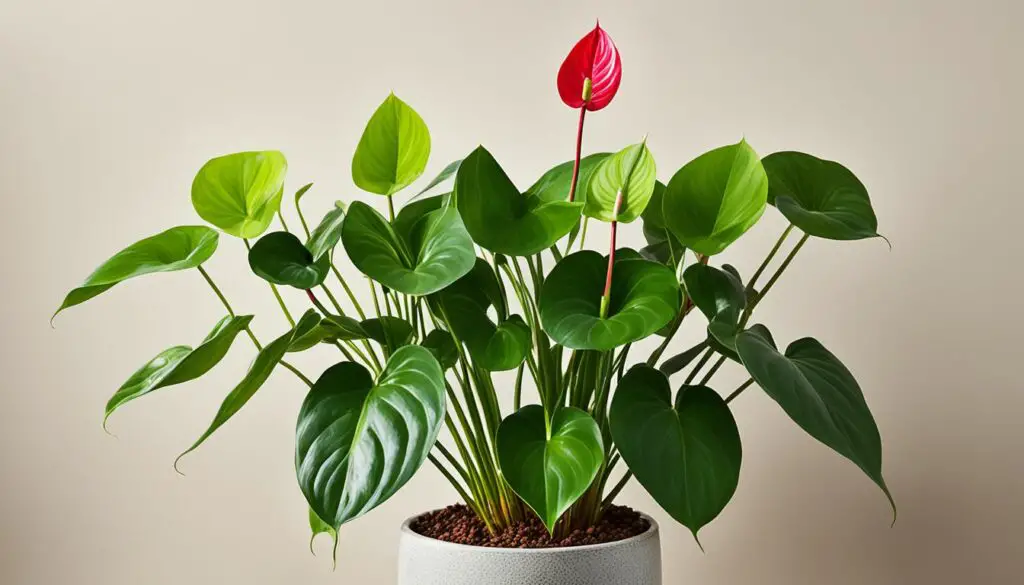
Key Takeaways
- Anthuriums are a genus of around 1,000 perennial plants native to Central America, northern South America, and the Caribbean
- Anthuriums can bloom repeatedly for long periods, with flowers that last 2-3 months
- Anthuriums require specific growing conditions, including high humidity, warm temperatures, and well-draining soil
- Proper watering, fertilizing, and pruning are essential for keeping Anthuriums healthy and thriving
- Anthuriums can be propagated through stem cuttings or division for additional plants
Understanding the Anthurium Plant
Anthuriums, also known as flamingo flowers or laceleaf plants, are a group of tropical plants. They belong to the Araceae family. These plants are loved for their bright flowers and lush leaves.
Common Names and Botanical Details
The botanical name for anthuriums is Anthurium spp.. There are about 1,000 types of these plants.
They are found in tropical areas of Central and South America, like Colombia, Ecuador, Peru, and Brazil.
These plants are known for their long-lasting “flower” stalks and heart-shaped leaves.
Native Habitat and Growth Habits
In the wild, anthuriums grow as epiphytes. They attach to trees or rocks and get moisture and nutrients from the air.
These plants love warm, humid places and grow slowly to moderately, depending on the light they get.
- Anthuriums are native to the Caribbean and South America.
- They can grow 12-18 inches tall and 9-12 inches wide at maturity.
- Anthuriums have a slow to moderate growth rate, depending on lighting conditions.
- These plants are known for their ability to purify indoor air by removing formaldehyde, ammonia, toluene, and xylene.
“Anthuriums are a true treasure of the tropical world, captivating us with their vibrant blooms and lush foliage.”
If you’re into plants or new to indoor gardening, learning about anthuriums can help. It can guide you in caring for these beautiful tropical plants in your home or garden.
Grow An Anthurium and Care: Ideal Growing Conditions
Potting Mix and Container Requirements
To make sure your anthurium does well, use a well-draining anthurium potting mix. A good mix is half orchid and half houseplant media. These plants like soil that’s a bit acidic, with a pH between 5.5-6.5.
For anthurium container requirements, choose a pot with lots of drainage holes to stop root rot. When the plant gets bigger, move it to a new pot every 2 years or when the roots fill the pot.
Light, Temperature, and Humidity Needs
Anthuriums need bright, indirect sunlight for about 6 hours a day. They do best in warm places between 65-85°F. They also like high humidity.
In dry places or during the winter, use a pebble tray or humidifier to keep the humidity up. This helps meet their anthurium temperature needs and anthurium humidity requirements.
| Anthurium Growing Requirement | Ideal Condition |
|---|---|
| Anthurium Potting Mix | 50-50 blend of orchid and houseplant media |
| Anthurium Soil pH | 5.5-6.5 |
| Anthurium Light Requirements | Bright, indirect sunlight (6 hours per day) |
| Anthurium Temperature Needs | 65-85°F |
| Anthurium Humidity Requirements | High humidity levels |
By giving your anthurium the right anthurium potting mix, anthurium container requirements, anthurium light requirements, anthurium temperature needs, and anthurium humidity requirements, you’ll create perfect conditions for it to grow and flourish.
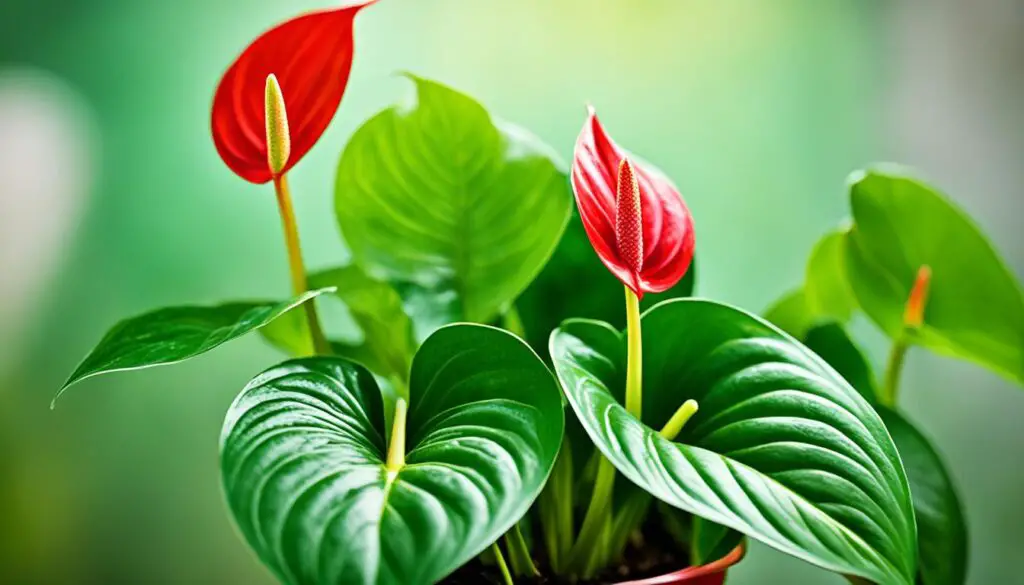
“Maintaining the correct environmental conditions is key to growing healthy, vibrant anthurium plants.”
Watering and Fertilizing Your Anthurium
Keeping the right anthurium watering schedule and anthurium fertilizer requirements is key for your plant’s health and blooms.
These tropical plants need specific care for moisture and nutrients. Getting it right can greatly improve their health.
Water your anthurium when the top 2 inches of soil feel dry. But don’t let the soil dry out completely.
Water until water drains out the bottom, but avoid leaving the plant in water to prevent root rot. Feed your anthurium with a diluted, high-phosphorus liquid fertilizer weekly during the growing season to help it bloom more.
“A good starting point for fertilizing Anthuriums is once every six months, but for those wanting to promote significant growth and flowering, fertilizing can be done up to once a month.”
Anthuriums don’t need a lot of food, but regular, balanced fertilizing during the growing season helps a lot. Use a fertilizer with an NPK ratio of 10:10:10, or something with more phosphorus like 1:2:1 to help flowers grow.
Watering and fertilizing are important for these beautiful plants. By knowing what they need, you can make sure your anthurium thrives and gives you lovely blooms for a long time.
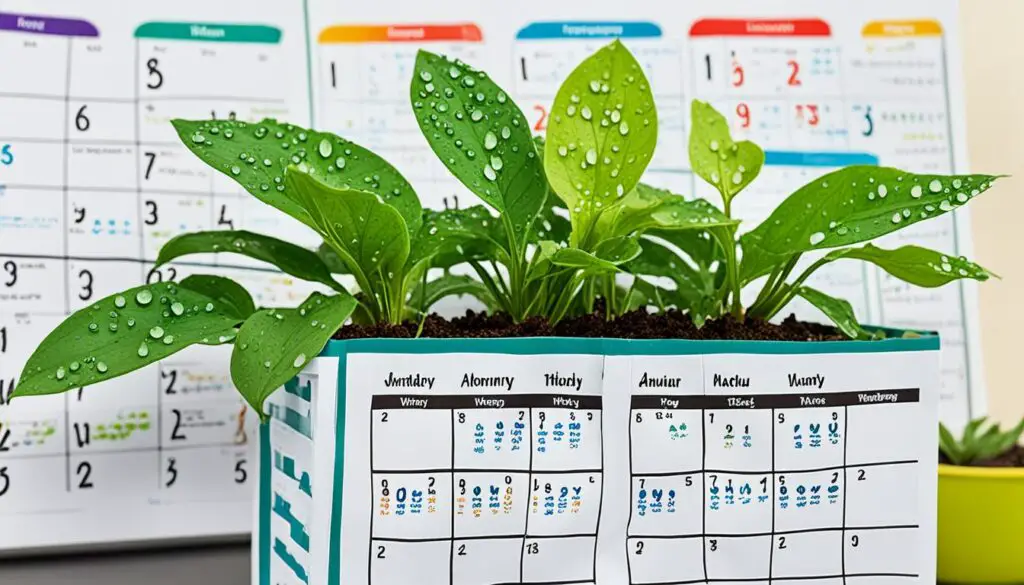
Anthurium Maintenance and Propagation
To keep your Anthurium thriving, focus on regular maintenance. Start by pruning off older leaves and faded flowers. Cut them at the base or use sterile pruners to avoid spreading diseases.
Repotting is key, as Anthuriums prefer a slightly larger container every 2-3 years. Choose a pot that’s only about 2 inches wider than the old one. This helps with healthy growth.
Propagating Anthuriums is easy and can be done during repotting or by taking cuttings. Look for side shoots, or “pups,” along the main stem. Carefully remove them and pot them up individually. With proper care, these cuttings can quickly become new, vibrant plants.
Watch out for pests like mealybugs, spider mites, and scale insects. Use natural methods to control them, such as blasting the leaves with water or applying insecticidal soaps. Regularly check your Anthurium and deal with any problems quickly to keep it looking great.
FAQ
What are the common names for anthuriums?
Anthuriums are also known as tailflower, flamingo flower, and laceleaf.
What are the botanical details of anthuriums?
The botanical name is Anthurium spp., and they belong to the Araceae family. They are herbaceous perennials. At maturity, they can grow 12-18 inches tall and 9-12 inches wide.
Where are anthuriums native to?
Anthuriums are native to Central America, South America, and the Caribbean. They thrive in warm, humid environments. They can grow as epiphytes on other plants in their native habitats.
What type of potting mix and container do anthuriums need?
Anthuriums should be planted in a well-draining potting mix. A 50-50 blend of orchid and houseplant potting media works well. They prefer acidic soil with a pH between 5.5-6.5. Pots should have ample drainage holes to prevent root rot.
What are the light, temperature, and humidity requirements for anthuriums?
Anthuriums thrive in bright, indirect sunlight, needing 6 hours of light per day. They prefer warm temperatures between 65-85°F. High humidity levels are best. In dry climates or during winter, use a pebble tray or humidifier to keep humidity up.
How should I water and fertilize my anthurium?
Water your anthurium when the top 2 inches of soil are dry. But don’t let the soil dry out completely. Water until it runs out of the drainage holes, but avoid leaving the plant in water. Feed them weekly during the growing season with a diluted, high-phosphorus liquid fertilizer to encourage blooming.
How do I maintain and propagate my anthurium?
Prune off older leaves and flowers as they fade, cutting them at the base or using sterile pruners. Repot anthuriums every 2 years, moving to a pot only 2 inches larger. Propagate by removing and potting up side shoots (pups) that develop on the main stem.
Are anthuriums toxic?
Yes, anthuriums are toxic to humans and pets.

